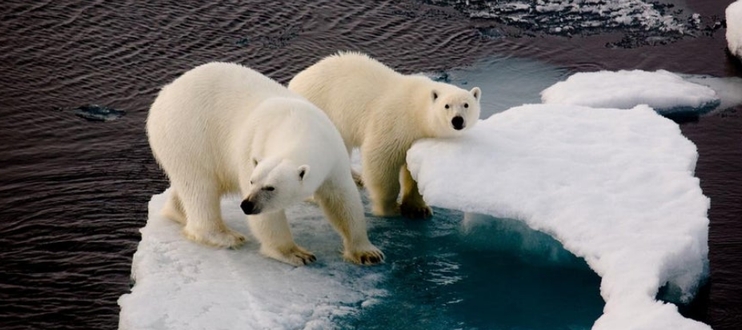The competition profits: all those companies and institutions, which do not believe there is a climate problem. The idea is simple. Let the others work in vane (on an unrealizable project), while keeping to your core business yourself. Why is this so hard to believe? Because, in practice, nobody accepts the reality that today, unlike ever before in human history, business is global: it essentially transcends national barriers.
When the Climate Church had not yet replaced science with ideology, scientists still were at liberty to publish unbiased research, without risking their reputation. On April 2, 2002, Daniel Rothman published a paper in the Proceedings of the National Academy of Sciences of the USA (volume 99, pages 4167-4171). After a good deal of corrections (that IPCC journalists have no idea about), Rothmann shows his final result:
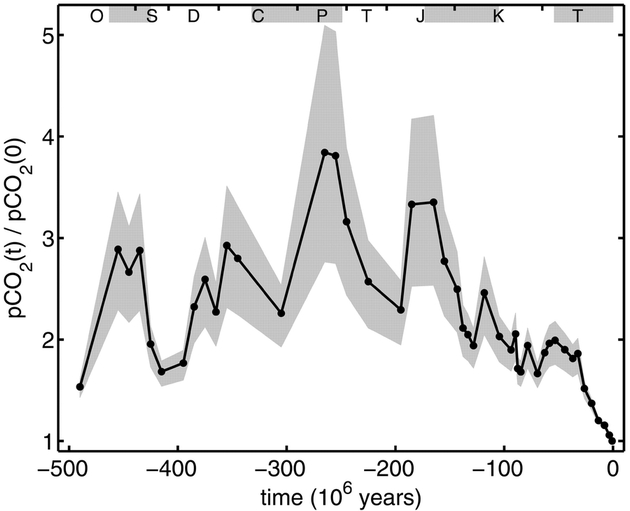
Carbon dioxide levels normalized on the present (400 parts per million)
The grey bars at the top indicate ice ages
The letters at the top abscissa stand for geological periods: Ordovician, Silurian, Devonian, Carboniferous, Permian, Triassic, Jurassic, Cretaceous, and Tertiary
Two important features strike us immediately:
- never have carbon dioxide levels been as low as today (400 ppm)
- on the 50 million year time scale, no correlation exists between carbon dioxide and temperature
Since the moon-landing project, NASA only reached the news with denying its highly sophisticated fake (I believed it for many years). Now they apparently decided to dedicate the American tax-payers’ money to another fake project: brainwashing citizens into believing something is wrong with human production of carbon dioxide. They try to scare us with these graphs:
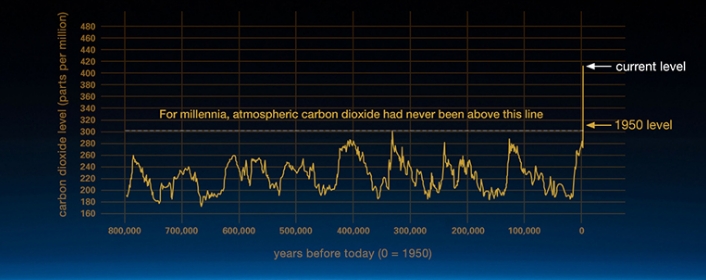
NASA crackpots mimic Mann’s hockey stick
This is what you get if you tell only a tiny part of the story. Moreover, the hockey stick temperature increase is as fraudulent as was Michael Mann’s hockey stick carbon dioxide increase.
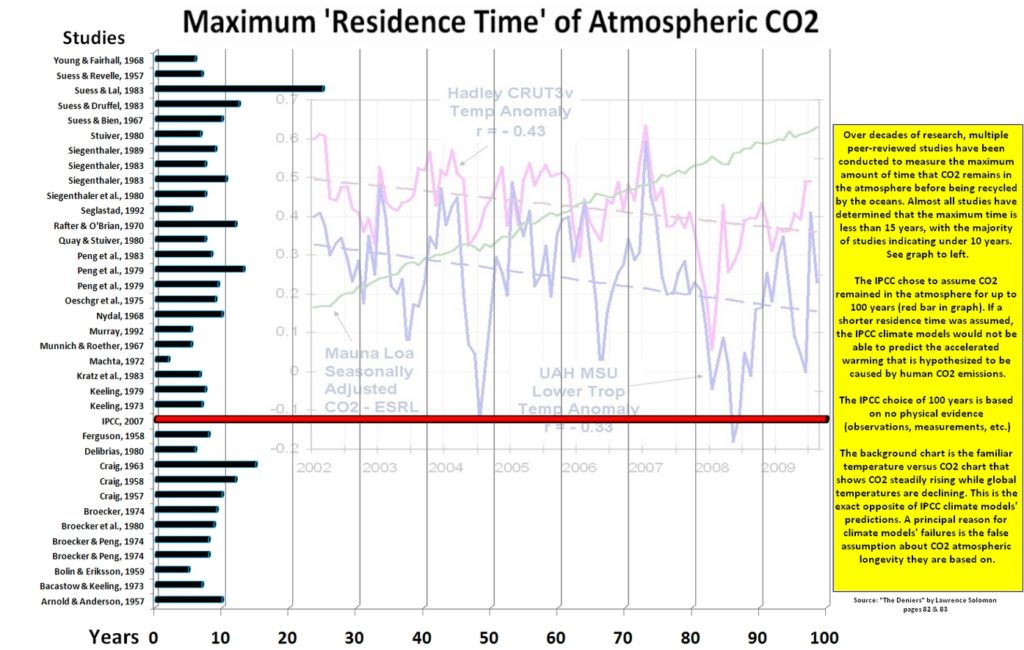
Maximum Residence Time of Atmospheric Carbon Dioxide Before it is Absorbed by the Oceans
On average, the scientific studies point to a maximum residence time (a measure for the time that the oceans need to correct for an imbalance of atmospheric carbon dioxide) of 8 years. The IPCC takes 100 years as a norm, which is 12 times the scientifically established number.
Furthermore, As shown by Caillon et al. in Science 299 (2003) 1728, the atmospheric CO2 concentration does not lead changes in global temperature, but it lags them:

When the time scales are displaced by 800 years, atmospheric CO2 variations exactly superpose with global temperature variations, as measured by Argon isotope concentrations. Interestingly, the variations in atmospheric CO2 damp out the variations in global temperature. Such behavior is typically associated with cause (global temperature) and effect (atmospheric CO2), when they are related by a temporal integral (in this case, by what mathematicians call a convolution).
Hence, whatever smart guys might tell you, a rise in carbon dioxide does not cause a rise in temperature, but quite obviously, a rise in temperature causes the oceans to release carbon dioxide. This is a slow process, as it takes the oceans about 800 years to reach equilibrium with the atmosphere regarding the carbon dioxide concentration. On longer time scales, there is no correlation between atmospheric and oceanic CO2.
Interestingly, one of the coauthors of the Caillon paper, Jeff Severinghaus, is not able to tell the difference between a lead and a lag. I wonder what such a guy is doing at UCSD. On non-scientific sites, Severinghaus gives a completely different interpretation of his scientific results. It is nonsensical, but he is addressing the illiterate, so WTF? “Warmings take about 5000 years to be complete. The lag is only 800 years. All that the lag shows is that CO2 did not cause the first 800 years of warming, out of the 5000 year trend. The other 4200 years of warming could in fact have been caused by CO2, as far as we can tell from this ice core data. The 4200 years of warming make up about 5/6 of the total warming. So CO2 could have caused the last 5/6 of the warming, but could not have caused the first 1/6 of the warming.” In his conclusion, Jefferinghaus demolishes the basis of his own contention: “So, in summary, the lag of CO2 behind temperature doesn’t tell us much about global warming”. Pathetic!
And since when is CO2 a dangerous gas? In sufficiently high concentrations, every substance becomes toxic. Today, however, we have an obvious shortage of it. The first graph in this blog already showed we are at a historic minimum of CO2 concentration, and believe me, plants did not evolve yesterday. They evolved when there was plenty of CO2 in the atmosphere. So how do plants fare under today’s atmospheric conditions? Badly. Below is a result taken from a European Journal of Plant Pathology paper by Zhou et al. (EJPP 2019 vol. 154, p. 31):

Stomatal apertures in plant leaves allow for atmospheric CO2 assimilation. A less beneficial effect of increased stomatal apertures, is the evaporation of water: the larger the aperture, the easier the uptake of CO2, and the easier the evaporation of water. In dry regions it is of crucial importance to increase atmospheric CO2 levels: it is by far the cheapest way to turn deserts back into the gardens they once were. Of course, the IPCC mafia is not interested in tropical countries: little can be plucked from featherless chicken. For a review of water loss and CO2 assimilation for plants in natural environments, I refer to Schulze & Hall (1982) in Physiological Plant Ecology II vol 12.
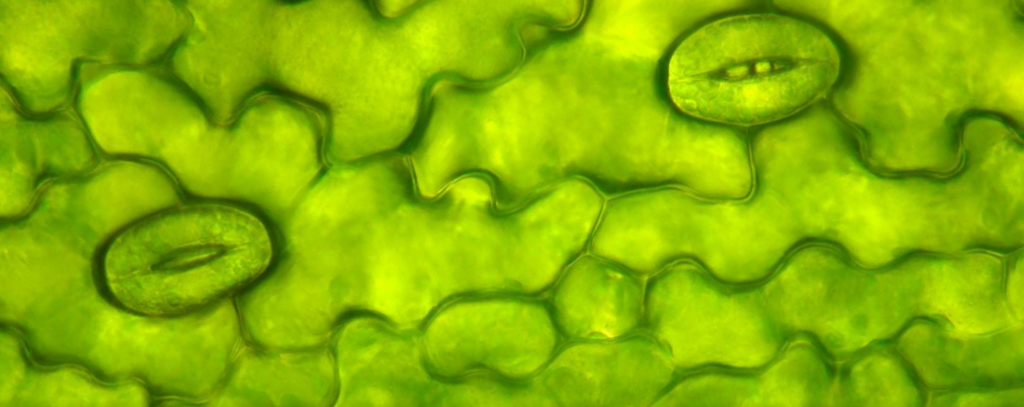
Slightly opened stomata in a plant leaf
